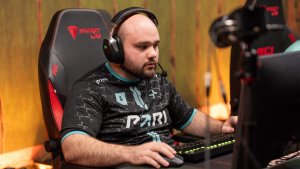Dota 2 is one of the biggest and most classic esports. Even if you’re not quite on the level of competitors at The International yet, there’s room to compete in the Dota 2 ranks for everyone. This is the side of the game where you’re up against everyone else at your skill level. The place where you get to see your progress, as you build your skills and rise higher and higher up. For a lot of players, it’s the reason to play in the first place.
How exactly do the Dota 2 ranks work though? We’ve got the whole thing figured out here. How all of the Dota 2 ranks works, how you can climb them, and the other little features you need to know about like resets.

Dota 2 Ranks Explained
Dota 2 ranks are what govern where you sit in the hierarchy of the game’s skill level. The title uses a metric called Matchmaking Rating or MMR. This is the rating that the game gives you. Everyone has one, from beginners to winners at The International each year.
Your MMR rating will be affected at the end of each game. It’s a bit more complicated than a basic system where wins mean it goes up and losses means it goes down. There are quite a few different factors that are taken into account for the Dota 2 ranks. MMR depends on other factors than just wins though, like your performance in calibration matches.
All Dota 2 Ranks
Dota 2 ranks are essentially the names that are given to each MMR bracket. These are the current Dota 2 Ranks and what MMR you’ll need to reach to get to each bracket.
Which rank one you’re in is basically just going to come down to how much MMR you have at any particular point.
| Rank | MMR |
|---|---|
| Herald | 0-769 |
| Guardian | 770-1539 |
| Crusader | 1540-2309 |
| Archon | 2310-3079 |
| Legend | 3080-3849 |
| Ancient | 3850-4619 |
| Divine | 4620-5420 |
| Immortal | 6000+ |
The Dota 2 MMR ranks are effect by a few factors outside of just wins and losses too. These have been more recently introduced, Ranked Confidence and Glicko.
Glicko
The other new factor in recent updates has been the Glicko rating system. Glicko is apparently a bigger factor in deciding your rank than ranked confidence.
Glicko is a system where players will have a larger MMR change for games depending on the difference between their rank and their opponents, giving more weight to bigger wins than small ones. It should also punish anyone buying an account too high in the Dota 2 ranks for them to perform at.
Ranked Confidence
From 2023, ranked confidence has been a factor in the Dota ranks. This works like decay. When you take a break from the game, you’ll gradually lose your ranked confidence. However, confidence will increase as you’re more consistent. Confident is the right word here, as it’s essentially a way for the game to measure how confident it is in the rank you’ve achieved.
Ranked confidence makes sure lapsed players aren’t still sitting at the top of the leaderboard. If you return to the game after a long break, you’ll want to practise a little before you get back into the game. It makes sense to have a feature like this, the best Dota 2 teams don’t stay on top skipping games either.
How Does the Dota 2 Ranking System Work?
The Dota 2 ranking system begins by giving you a rank, which starts with calibration matches. When you first jump into ranked mode, you’ll face ten different calibration matches. These matches will then attempt to estimate where your MMR should be, rather than just starting you at zero.
These ten calibration matches are pretty important for where you start off.
If you want to reset your rank purposely, there’s a system for that too. By going into your settings, then account, then activating recalibration, you can force calibration matches.
This can be a positive and a negative. On the one hand you could go up. On the other, the Glicko system is in full effect here so losing a first match might mean you’ll go quite far down. It’s essentially a gamble.
How to Climb Ranks in Dota 2
That’s how it all works, but the important thing is how can you gain MMR. The game doesn’t want to make it too easy, but there are some ways to improve your chances.
- Go into Calibration matches Prepared – Your MMR is very volatile in the first ten matches. Go in prepared. Do your practise, your warm-up, and ensure you’ll be playing your best. This can seriously cut down the time it takes to rank up by getting a higher start.
- Game Sense – A bit part of going up is performing well, and knowing the game inside and out. You’ll need to know your tactics and be prepared.
- Use the Right Heroes – Some Dota 2 Heroes are much better prepared to climb than others. Stick with these if you want to get up the ranks faster.
- Objectives – Ultimately winning or losing is more important than any specific objective, but one leads to the other. Try and keep the end result in mind.
- Updates – Keep an eye on changes and developments in Dota 2 news, they can affect your performance.
Dota 2 can be one of the toughest games to climb ranks in. The ranked system here is fairly brutal, with players obsessing over where they are in the overall leaderboard.
The system for assigning you MMR is ultimately just a way to gauge your skill level in the game. Trying your best to game the system would see you in a rank too high for you, which could make the game less enjoyable overall. The important thing is to try and increase your skill level and a higher rank will follow.
























